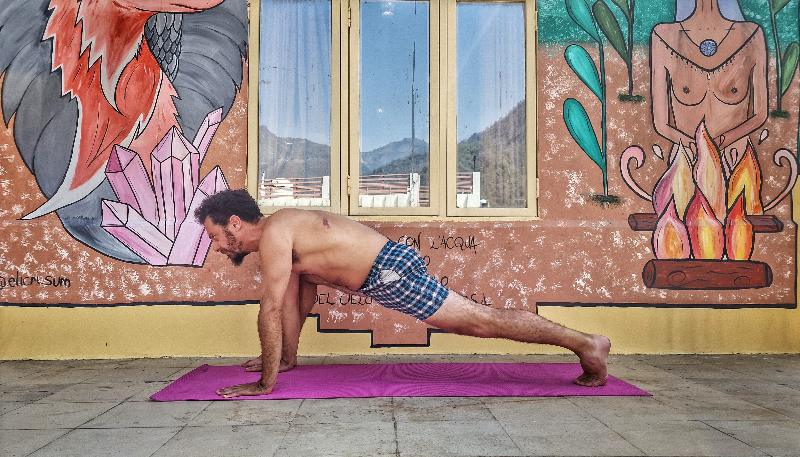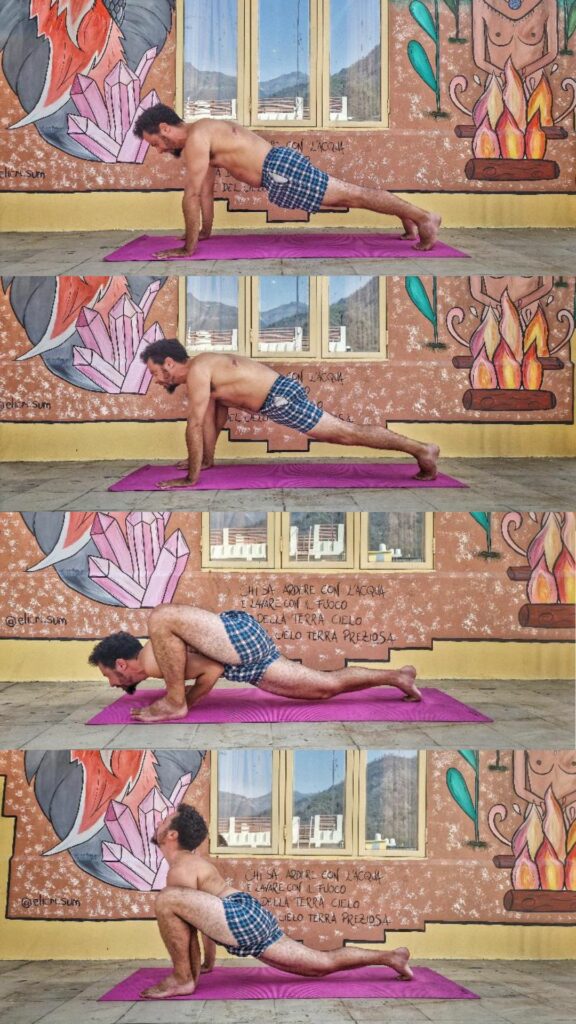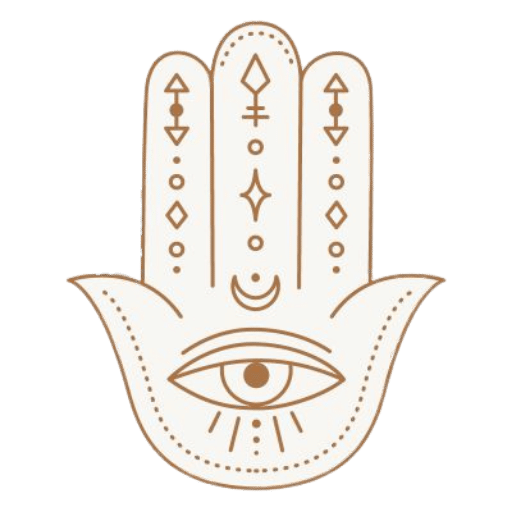
Hanuman Dandasana, a less-known dynamic flow yoga posture from the Kundalini and Kriya Yoga traditions of the Himalayas
Benefits, contraindications, variations, and how to do it
Hanuman Dandasana is a somehow obscure exercise, not many yogis practice nowadays. It is though, an incredibly powerful asana, a dynamic isotonic exercise that is both a strengthening and a stretching pose.
This pose was thought to me in northern India by a Kundalini Kriya teacher coming from the lineage of the Himalayan Tradition.
It’s a flowing asana, meaning this is not static, what we in the wast usually identify as a yoga pose; instead, Hanuman Dandasana is a complete exercise, a series of connected movements with a start and a finish.
Meaning of “Hanuman Dandasana”
Hanuman Dandasana is not to be confused with Hanumanasana, the front split pose. Both poses though have some things in common and are both dedicated to Hanuman.
Hanuman is a prominent figure in Hindu mythology and a beloved deity in Hinduism. He is revered as the monkey god and is known for his unwavering devotion, strength, and loyalty.
Hanuman is celebrated for his pivotal role in the epic Hindu scripture, the Ramayana, where he aided Lord Rama in his quest to rescue his wife Sita from the demon king Ravana. Hanuman’s tales exemplify courage, humility, and selflessness, making him an enduring symbol of devotion and divine service in Hindu culture.
He is widely worshipped and revered for his protective and benevolent nature.
In Sanskrit, “danda” (दण्ड) generally refers to a stick or rod. It is a common term used in various contexts within Hinduism, yoga, and Ayurveda. In yoga, “danda” can either refer to a physical staff, a straightening rod used as a prop or support during certain postures to help maintain alignment; or as a part of a pose name, such as Dandasana (staff pose), or Chaturanga Dandasana (four-limbed staff pose).
Asana, is, of course, the Sanskrit word for posture.
So the literal meaning of Hanuman Dandasana is “Hanuman’s Rod Pose”.
How to do Hanuman Dandasana
Variation 1 – Hanuman Dandasana for Beginners
- Start in high plank (kumbhakasana/phalakasana)
- Send your right leg next and outside your right palm, while keeping the rest of the body as it is (a sort of lizard pose with your arms straight).
- Return to high plank.
- Send your left leg next and outside your right palm.
This is one round.
Variation 2 – Cardio Hanuman Dandasana
This variation is very similar to the first version, but this time you’ll switch leg by jumping, without returning to high plank. This means the plank will only be held at the beginning of the exercise.
Variation 3 – Full Advanced Hanuman Dandasana
Choose variation 1 or variation 2.
Each time you send one of the legs forward to the outside of your extended arms, perform a chaturanga push-up: arch your back while bending at your elbows with them pointing straight backward, roll your shoulders back and bring your chest up, then return your spine to neutral.

Benefits of Hanuman Dandasana
Hanuman Dandasana Pose mixes together the benefits of plank, lizard pose, and in its full version, chaturanga dandasana:
- Deep hip opening: Similarly to a Lizard Pose with straight arms provides a deep stretch to the hip flexors, groin, and inner thighs, helping to improve flexibility and release tension in the hips.
- Core strength: Hanuman Dandasana engages and strengthens the core muscles, including the abdominals, obliques, and lower back. It activates not only the superficial core muscles but also the deeper stabilizing muscles, promoting better coordination and integration between the core and the rest of the body. Regular practice can help develop a strong and stable core, improving overall posture and balance.
- Upper body strength: Maintaining the pose requires activation and strengthening of the muscles in the arms, shoulders, and chest. It helps build strength and endurance in these areas, contributing to improved upper-body strength. By adding the chaturanga pushup an additional workout is given to biceps and triceps.
- Increased stability: By holding the upper body in a straight line while the legs switch and jump to the outside of the arms, this traditional asana challenges and improves stability in the wrists, arms, and shoulders. This can be beneficial for activities that require upper body stability, such as lifting weights or performing various sports movements.
- Increased mobility and flexibility: Hanuman Dandasana targets the hip joints, promoting an increased range of motion and flexibility in the hips, which can be particularly beneficial for athletes, runners, and those with tight hip muscles.
- Stretches the hamstrings: by keeping your back leg straight and kneecap engaged, this asana gives a good stretch to the hamstrings, which contributes to improved flexibility and reduced muscle tightness in the back of the legs.
- Opens the chest and heart space: The extension of the arms and lifting of the chest in this variation helps to open the chest and heart space, promoting better posture and a sense of openness. Indeed this pose is used in our Kundalini Kriya for the Heart Chakra.
- Releases emotional and energetic blockages: As Hanuman Dandasana targets the hips, which are believed to hold emotional and energetic blockages, practicing this pose can facilitate the release of these blockages, promoting emotional well-being and a sense of grounding.
Contraindications to Hanuman Dandasana
While so many benefits are given to the practitioner of this fascinating asana, contraindications shall also be kept in mind.
This is a very challenging exercise, which should be attempted only by fit and experienced practitioners, especially in its full, advanced form.
Refrain from the practice of Hanuman Dandasana if you have one of the following conditions:
- Wrist or shoulder injuries: This pose put weight and pressure on the wrists and shoulders, so individuals with existing wrist or shoulder injuries or conditions should be cautious or modify the poses as needed.
- Carpal tunnel syndrome: Hanuman Dandasana can put strain on the wrists, which may aggravate symptoms of carpal tunnel syndrome.
- Recent surgery or injury: If you’ve had recent surgery or injury in the wrists, shoulders, or core muscles, it’s important to consult with a healthcare professional or experienced yoga instructor before attempting it.
- Pregnancy: During pregnancy, it’s crucial to modify or avoid poses that place excessive pressure on the abdomen.
- High blood pressure: Hanuman Dandasana requires significant upper body and core strength, and can easily increase blood pressure. Individuals with medicated high blood pressure should approach it cautiously, those whose HBP is unmedicated should absolutely avoid it.
- Spinal or back issues: Individuals with spinal or back conditions, such as herniated discs or lower back pain, should modify or avoid these poses to prevent further strain or injury.
Caution Note: It’s always recommended to practice advanced poses like this under the guidance of a qualified yoga instructor, especially if you have any pre-existing conditions or concerns. Yoga teachers can provide appropriate modifications and alternatives to ensure a safe and beneficial practice tailored to your needs.
Check Also:
> Kashtha Takshanasana: How To & Benefits of the Wood Chopping Pose + A 15 Min Kundalini Kriya
> Utthita Lolasana [Swinging Standing Pose] How To & Benefits


